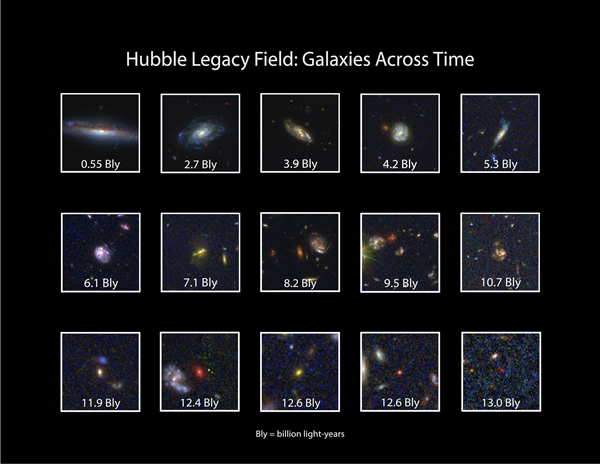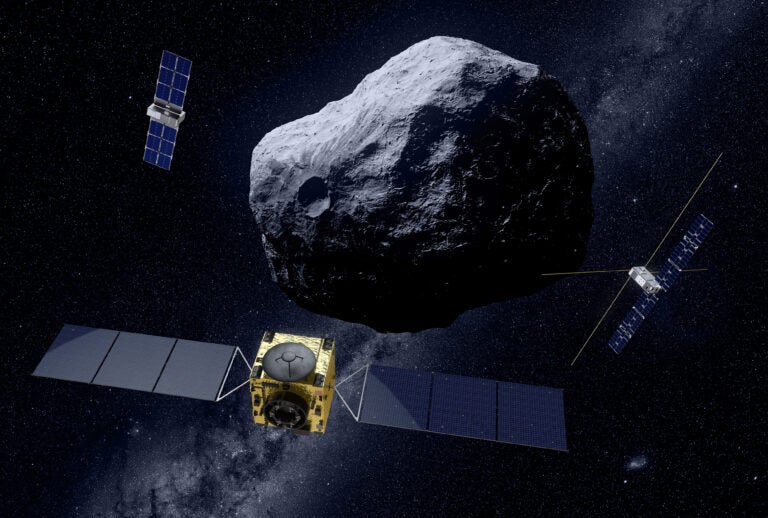After that first image, Hubble started visiting a different patch of space over and over with multiple different surveys, including the Ultra and eXtreme Deep Fields. It has widened the area of exploration until it now covers an area almost as large as the full moon. And Hubble has looked with different cameras and instruments over the years, so it now has images from the ultraviolet to the near-infrared.
By peering back through space and time, astronomers have learned more about how early galaxies formed and evolved, often from violent collisions with one another, which appear clearly in throughout the deep field images.
And now, astronomers have woven all those images together into one enormous tapestry, spanning time and space and wavelengths, to give a multi-dimensional view into the distant universe.
Not all of the Legacy Field is created equal. Each piece of the mosaic covered a slightly different patch of sky within the field of view, with slightly different instruments. But the core of the image combines the best of all the surveys.
It represents an enormous degree of time for Hubble – over eight months of observing time. And until future telescopes come online, it’s the sharpest, deepest view astronomers will get of the universe’s early days.
Yet missions like NASA’s planned WFIRST (Wide Field Infrared Survey Telescope) could surpass it. WFIRST has had a troubled path. It’s listed as a top goal according to the National Research Council’s 2010 decadal survey, meant to guide astronomy priorities – and funding. But it’s been on the White House Budget Proposal chopping block for a few years running, only to see Congress restore its funding each time.
Garth Illingworth of the University of California, Santa Cruz, is the leader of the team that assembled the Legacy image. He pointed out in a statement that, “The Legacy Field is a pathfinder for WFIRST, which will capture an image that is 100 times larger than a typical Hubble photo. In just three weeks’ worth of observations by WFIRST, astronomers will be able to assemble a field that is much deeper and more than twice as large as the Hubble Legacy Field.”











